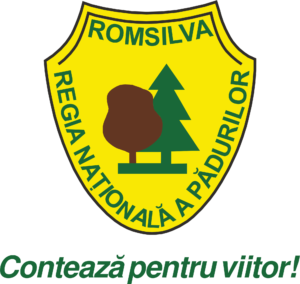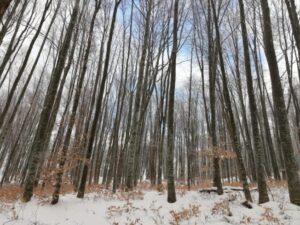Project initiated and carried out by RNP Romsilva - Covasna Forest Directorate in partnership with CovAlpin

The role and objectives of the forest

The forest plays a very important role in most aspects of our lives and therefore we must respect and protect it!
The objectives of preserving and protecting Romania’s forest area are classified into 3 categories: economical, ecological and social.
The economical objectives mainly refer to the physical and material offering of the forest, being aimed primarily at wood products: obtaining high-quality wood mass – wood for veneer, resonance wood, wood for lumber, as well as wood for paper & cardboard industry, energy industry, wood for chipboard and fibreboard, firewood, etc.
Apart from wood, other products are harvested from the spontaneous fauna and flora of the forests – non-wood products (accessories): game, numerous health-preserving resources (medicinal plants, berries, edible mushrooms, nectar and pollen of flowers), resin, etc.
Within the category of economic objectives are also included some forest protection effects, such as the preservation of water sources, reservoirs set up for energy purposes, communication routes, hydrotechnical constructions, agricultural lands, special objectives and attraction points, etc.
Ecological objectives – aim to maintain the natural balance, preserve and improve biodiversity in forest ecosystems and refer to:
- Water protection: maintaining a balanced flow for the streams & water sources in the area that feed the reservoirs, ensuring a balanced circuit of water in nature.
- Land and soil protection: conservation and improvement of soil fertility, prevention of erosion and ensuring the stability of slopes, in the case of land with high inclination, boulders and rocks, land located on sands, gravels or flysch substrates.
- Preservation of forest ecosystems, for the special climatic and anti-erosion role, forest curtains, protection against pollution
- Social interest: forests should be preserved for recreational purposes, especially those located around towns and in inner-city areas, balneo-climatic resorts, etc
- Scientific interest, protecting ecosystems with special natural elements (nature reserves, natural monuments, virgin and quasi-virgin forests, community sites, etc.);
- Special functions for the conservation and protection of biodiversity (national and natural parks, biosphere reserves, UNESCO natural heritage sites).
Social objectives aim at the contribution that the forest has in the daily life of the society, still ensuring, for a large population, firewood for cooking and heating of the houses.
At the same time, the forestry sector (forestry and forest exploitation and forestry-related enterprises) provides an important number of jobs.
Also, whilst increasing the automation of the living environment through technology, through development of industrialized agriculture and excessive urbanization, the forest satisfies the recreational-aesthetic and health needs of the inhabitants, bringing a special contribution to the protection of the air, waters, soil, climate, mountains, flora, fauna, maintaining the balance of nature, the beauty of the landscape, all of which lead to the improvement and preservation of a fundamental value – human health (the forest purifies the atmosphere; it fixes the carbon harmful to animals and humans and restores the necessary oxygen for their breathing (Statescu, 1884).
The health and living conditions of the large forest areas are much more favorable than those of the cities, especially the industrial centers. Forest air is cleaner, healthier, because smoke and dust are absent, harmful gasses are not found, and pathogens are relatively few (Dracea, 1920; xxx, 1950).
The presented objectives are to be achieved through sustainable forest management (the management and use of forests and forest lands in a way and at a rate that maintains their biodiversity, productivity, regeneration capacity, vitality and potential to fulfill, now and in the future future, relevant ecological, economic and social functions at local, national and global levels) and is reflected in the increase in living standards and quality of life.
